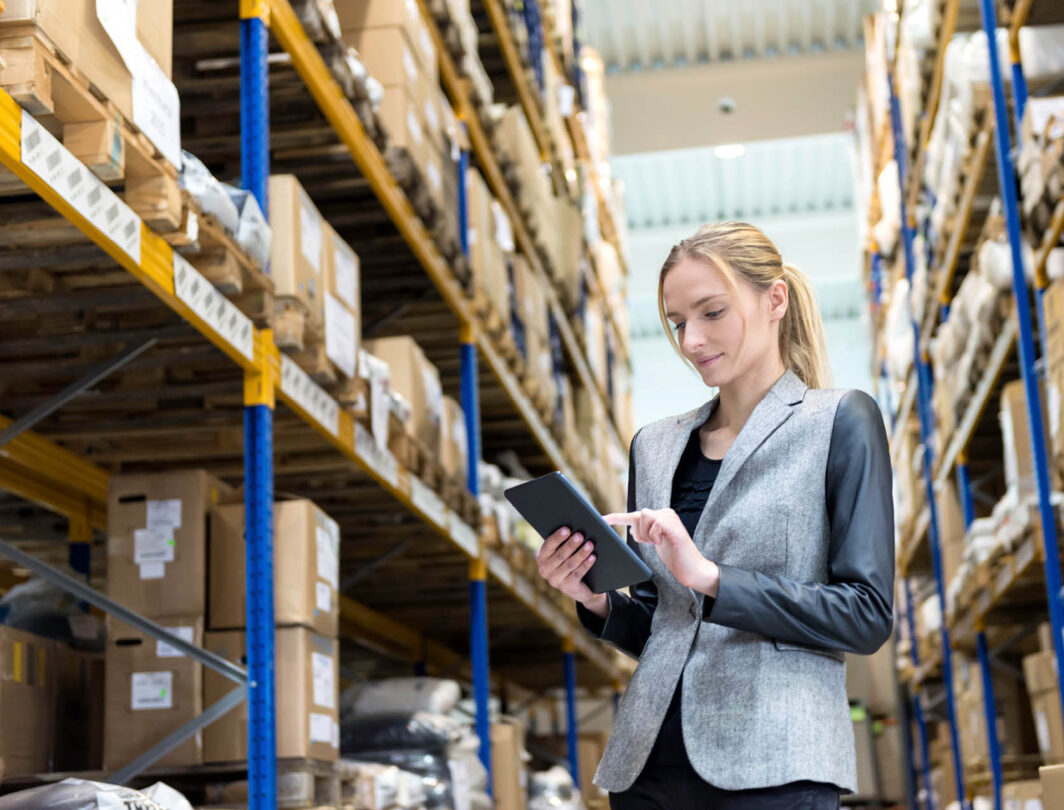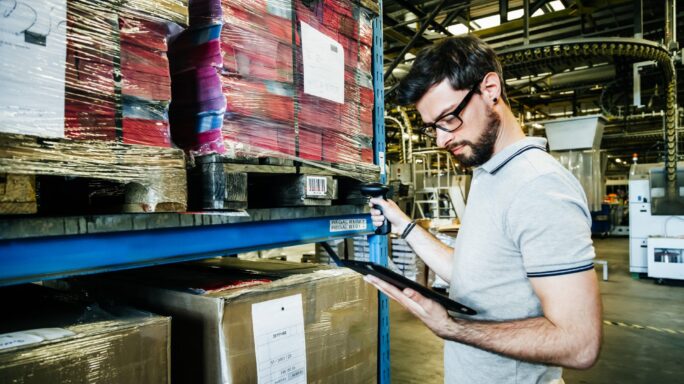Strategy, Legal & Operations
How will Brexit affect businesses? 14 things you need to know
How will Brexit affect businesses? Read this article for answers to questions you may have now the UK-EU trade deal is in place.

Editor’s note: This article has been updated in light of the UK-EU trade deal that was agreed at the end of 2020 and is now in place.
YouGov polling reveals that Brexit has dropped off the radar of most people in the UK.
Only 34% of poll respondents said Brexit was an important issue facing the country in late January 2021 – a fall from almost twice that measure in polling from mid-December 2020.
But for businesses, the challenges of adapting to Brexit remain profound. This is likely to be the case for coming years, too, as additional new legislation and cooperative technologies are introduced by the UK and European Union (EU).
As of 1 January 2021, businesses are getting to grips with the Trade and Cooperation Agreement (TCA), the free trade agreement referred to colloquially as the trade deal. Along with other UK-EU agreements, this was announced just before Christmas 2020.
This article attempts to outline the pertinent points of the UK-EU agreements, with particular reference to customs and VAT, as well as the other major adaptations required businesses now the Brexit transition period has ended.
The goal is to further the transition and transformational processes in your organisation. But this article can be no substitute for specific advice, legal or otherwise.
The new Brexit agreements are complicated, and ensuring your future trading is correct requires expert knowledge for your situation.
Below we refer often to Great Britain. This comprises England, Scotland and Wales. It’s not the same as the United Kingdom, which also includes Northern Ireland.
This distinction is required because trade with Northern Ireland differs significantly compared to Great Britain.
This FAQ article covers the following questions:
- What was Brexit?
- How does Brexit affect trade and how does Brexit affect my business?
- What are the preferential tariff rates following Brexit?
- What are the Brexit trade deal rules of origin?
- What’s an Authorised Economic Operator?
- How do I import from the EU following Brexit?
- How do I export to the EU following Brexit?
- How is Northern Ireland different to the rest of the UK following Brexit?
- How do I export goods to non-EU countries from the UK after Brexit?
- Product certification and conformity marking after Brexit
- Business travel to most EU countries following the end of the transition period
- Am I still be able to employ EU citizens after Brexit?
- How does Brexit affect the GDPR?
- How are the financial markets being affected by Brexit?
1. What was Brexit?
In a referendum on 23 June 2016, the UK electorate voted to leave the EU.
The UK formally left the EU on 31 January 2020. At that point a transition period began that ended on 31 December 2020.
Key from a business perspective is that, following the end of the transition period, Great Britain is no longer a member of the EU’s single market and customs union.
These enable the EU member states to function as a single trading area with no tariffs or border checks, little requirement for import/export documentation, and with a combined VAT system.
Great Britain now has customs borders with the EU, operating at crossing locations such as Dover and Holyhead, and a separate VAT system.
Shortly before the end of the transition period, a final piece of the jigsaw was put in place when the UK and EU legislatures ratified a free trade agreement.
This means that 100% of trade between the UK and EU countries receives preferential treatment – meaning there are no customs tariffs, and no quota (providing “rules of origin” conditions are met – see below).
However, there is now a requirement for customs documentation, and VAT accounting requirements have changed.
Note that, under the Northern Ireland Protocol, Northern Ireland remains part of the EU customs area in respect of goods, in order to retain an open border with the Republic of Ireland.
However, there is free movement of good between the UK and Northern Ireland (with some conditions as part of the Northern Ireland Protocol – see “How is Northern Ireland different to the rest of the UK following Brexit?” below).
2. How does Brexit affect trade and how does Brexit affect my business?
In broad terms, and outside of niche industries such as farming or medical research, businesses find themselves examining and revising the following areas of their business:
- Import and export of goods to and from EU countries, including associated VAT payments, VAT refund claims and (potentially) custom and excise duties for items outside the free trade agreement, or for which businesses opt to apply customs duties (see below). See our separate blog about VAT after Brexit.
- Import and export of goods to and from Northern Ireland, which has its own rules (see “How is Northern Ireland different to the rest of the UK following Brexit?” below). This affects both goods from and to Great Britain, as well as the EU.
- State aid, including grants and block exemptions.
- Transport and logistics, including fulfilment.
- Product safety, conformity or eco-compliance, including packaging and labelling that references EU licensing.
- Copyright, trademarks and patents.
- Environmental industrial standards, including emissions.
- Transfer of personal data between the EU and UK that’s covered by the GDPR.
- Mutual recognition of qualifications and relevant licences (including audit, banking and insurance licences).
3. What are the preferential tariff rates following Brexit?
Once the transition period ended it was possible customs duties could have applied to all imports into Great Britain.
Additionally, customs duties could have applied to exports from the UK once they arrived at their European destinations.
To avoid this, the UK-EU agreed a free trade agreement in December 2020. Both parties decided that goods that formerly moved freely during the UK’s membership of the Common Market would be 0% tariff and not be restricted by quotas.
This is referred to as preferential treatment and means there won’t be any customs duties or limit to the quantity of goods that can be imported or exported between the UK and EU.
But this comes with conditions. One of these is called the rules of origin, and it’s described under “What are the Brexit trade deal rules of origin?” below.
If the rules of origin can’t be met then the goods can still be traded.
However, the World Trade Organisation’s Most Favoured Nation (MFN) rules apply. This means that goods coming into the UK may have customs duties applied according to the UK Global Tariff.
Goods exported from the UK to the EU might have the Common External Tariff applied. There might also be quotas that limit the quantity of goods that can be traded at a given time.
However, the government points out that even with the MFN tariffs applied, it’s not always the case there will be restrictive customs duties.
According to the tariff guides of the UK and EU, some goods are zero-rated, or have a very low tariff. Therefore, it should not be an automatic assumption that preferential treatment should be used for each and every import into the UK or EU.
Using the UK Global Tariff for imports means there’s no need to abide by the rules of origin rules, which can simplify trade and customs requirements.
To claim a preferential rate of duty there are relatively straightforward but differing rules for customs declarations depending on whether you’re using the CHIEF system or the Customs Declaration Service (CDS).
If you’re using a customs broker or similar then they will handle this for you, but the if not then details can be found on the government’s overview of preferential duty rates.
4. What are the Brexit trade deal rules of origin?
To be eligible for the preferential rate of duty (that is, imports are free of customs duty and quotas), goods moving between the UK and EU have to meet the rules of origin rules as laid out in the Trade and Co-operation Agreement (specifically Annex Orig-1, 2 and 2A).
This is designed to stop businesses using the UK or EU countries as merely a staging post to gain access to the other marketplace.
An example is importing cheap goods from the far east, then exporting the goods using the preferential rate of duty that wouldn’t be possible had the goods gone directly to that marketplace from the far east manufacturer.
In summary, the rules of origin say that the goods (or originating materials used to make them) must originate in either the UK or EU. More than this, you must prove this is the case by obtaining a supplier’s declaration or equivalent documentation (as outlined in Annex ORIG-3 in the agreement).
This is known as a statement on origin for imports and it provides importers with what’s called ‘importers knowledge’.
Similarly, if you’re exporting to the EU then your customer will request a statement on origin from you.
The statement on origin can be included on the invoice or other commercial documentation, with the exception of the bill of lading. The statement must describe the goods in “sufficient detail to enable its identification”.
Any such statement remains valid for two years in the UK, and 12 months in the EU (from the date quoted on the import documentation).
Note that for exports above €6,000 (or £5,700), the EU exporter must have a Registered Export number and include it in their statement on origin.
Exactly what qualifies goods or products for inclusion within the rules of origin, as outlined in the Annexes mentioned earlier, is lengthy and intricate. There’s a mind-boggling level of detail.
It’s further complicated by the fact there are “tolerances”. For example, if the weight of the non-originating materials does not exceed 15% of the total weight then you might be OK.
Similarly, it’s also possible to include certain proportions of non-EU or UK originating materials in products and still be able to claim the preferential duty rates.
And if you buy in goods or materials from outside the EU and UK, but work or process them into something else, then this also means the preferential tariff rates could be applied. But the rules for what defines this kind of transformation are as complicated as the other aspects of rules of origin.
The rules of origin requirement can bring unexpected consequences.
Infamously, Marks and Spencer has publicly discussed an issue surrounding exporting confectionary to Ireland from the UK, following its import from Germany. It’s unclear if it needs to transform the product to be able to claim preferential tariffs.
It’s hoped issues such as this will be worked out as trade continues between the UK and EU following Brexit. It certainly wasn’t the intention to restrict trade in this way, so there’s a clear incentive for both sides to create clarity.
As for right now, however, the solution to concerns about rules of origin brings two realistic options.
The first is to find out if the preferential tariff rates apply for your products, which will most likely involve consulting an expert and the aforementioned Annexes.
The second is simply to forget about trying to claim the preferential tariff rates, and pay the customs duty, incorporating any charges as a price rise for your customers. For many goods the rate of duty will very low, or even zero.
5. What’s an Authorised Economic Operator?
Perhaps unsurprisingly, the new customs requirements for UK-EU trade have placed a renewed focus on the Authorised Economic Operator (AEO) status that businesses can attain. This is effectively a way of becoming trusted and therefore potentially expediting customs processes.
AEO comes in two forms:
- Customs simplification
- Operator security and safety.
You can hold either, or just one.
Once awarded in the UK, the status is mutually recognised by the EU, as well as the USA, China and Japan.
Put simply, the benefits of both AEO statuses are faster clearance of goods when moving across customs borders, with fewer interventions required.
When it comes to security and safety, an AEO status means you might be considered a lower risk, which could reduce the number of checks, and your goods could be treated as a priority with customs clearance.
HMRC is responsible for awarding AEO statuses in the UK. As you might expect considering the benefits it brings, there are many criteria that must be met for your business to be considered.
Of course, if your business has a base in an EU country you may be able to apply for AEO within that country assuming you meet the local criteria. Again, the mutual recognition means this AEO status would be valid in the UK too.
However, HMRC consider the following before awarding AEO status:
- Compliance: How well you’ve handled tax and customs over the past three years (or less if your business is newer), in addition to other details. How you dealt with errors and the remedial actions you took will be part of this.
- Customs record keeping: HMRC will need to see you take commercial record keeping seriously. For example, you’ll need to demonstrate full audit trails for logistics. Your processes for the flow of goods will need to be documented.
- Solvency: Your assets will need to be positive, and HMRC will need to see your full management accounts and projections. You’ll need to provide a letter of conformity from your accountant or bank.
- Competence and qualifications: Among other things, you’ll need to give evidence you have practical competence in customs matters for the past three years (or fewer, if your business is younger). A person in your business must be dedicated to customs, although it doesn’t have to be their only role.
Additionally, if applying for the security and safety AEO status you’ll need to show procedures around risks – to you supply chain, for example. You’ll need to show your staff are trained too.
Unsurprisingly, AEO status is typically achieved by larger businesses that have the resources to dedicate to the requirements. Smaller businesses are perhaps better served by using an intermediary such as a customs agent or broker.
6. How do I import from the EU following Brexit?
Importing goods to Great Britain from the EU has understandably changed following the end of the Brexit transition period. There are now customs and VAT considerations.
Note that there are different rules for goods sent by post and there are different rules for Northern Ireland, as described under the “How is Northern Ireland different to the rest of the UK following Brexit?” heading below.
Generally speaking, when it comes to customs, the following is required for importing goods from EU countries. VAT is discussed under the “Postponed VAT accounting for imports” heading later.
- You must have an EORI number that starts with GB. If you need to make customs declarations or receive customs decisions in an EU country, you’ll need to apply for an EORI there too.
- You will need to know the origin, classification and customs value of the goods. To claim the preferential rates of duty, you must ensure you’ve received an accurate statement of origin from your EU supplier.
- You should find out if the goods are controlled, or have excise duty applied in addition to customs duties. If the goods are controlled then it’s not possible to delay declarations.
- After 1 April 2021, additional rules on products of animal origin (POAO) or a regulated plant and plant product come into force. You must submit pre-notification and the relevant health documentation.
- You or an agent working on your behalf must declare the goods when they enter Great Britain.
- You or an agent working on your behalf must pay any customs duties that are due, and you must account for and possibly pay import VAT (although both customs and VAT payments can be postponed using various methods – see below).
Delaying customs import declarations
Until the end of June 2021, you can delay making an import declaration for up to 175 days after the date of import. You can also delay payment of any customs due until that point.
This is possible for all eligible imports received up to and including 30 June 2021.
Immediately upon import you can make an entry into your own commercial records (known as entry in declarant’s records, or EIDR).
Or you can submit a simplified frontier declaration, which requires significantly less information up-front compared to a full customs declaration.
Whichever you choose, you then send a supplementary declaration within six months (or 175 days) after the goods were imported, and at that time also pay any customs duties owed.
For imports received on 1 July 2021 onwards, when the delayed declaration scheme ends, you must submit the supplementary declaration and any payment by the fourth working day of the month after you make an EIDR or submit a simplified frontier declaration.
To make use of simplified declarations, and assuming you’re not using a customs intermediary, you’ll need to:
- Apply for and receive authorisation to use simplified declarations.
- Get a CHIEF badge (and have software that can access CHIEF)
- Have aduty deferment account.
As mentioned, because of the complexities around importing and exporting, many businesses prefer to use a third party expert such as freight forwarding, customs agents or fast parcel operators to ease the paperwork.
Note that these need to be in the UK to be authorised to complete the customs formalities on your behalf.
Postponed VAT accounting for imports
If you import goods from anywhere outside the UK, and those goods are for use in your business, you can use postponed VAT accounting to avoid the requirement to pay import VAT immediately upon the goods entering the UK (e.g. at the port of entry).
This covers all imports, and not just those from EU countries.
With postponed VAT accounting, you declare the import VAT on your VAT Return. This avoids paying VAT and then reclaiming it later.
There’s no need to get authorisation from HMRC to use postponed VAT accounting, but you’ll need to include your EORI and VAT number on the customs declarations.
Using postponed VAT accounting is mandatory if you use delayed customs declarations, as described above, and if you continue to use EIDR after the delayed declarations period ends on 1 July 2021.
Note that different rules apply to VAT on goods imported in Great Britain from outside the UK not exceeding £135 in value.
Consignments under £135 no longer attract import VAT and instead supply VAT is applied at point of sale by the seller, as follows:
- If being sold to a consumer or non-VAT-registered business, the seller should charge UK VAT and will therefore need to have registered with HMRC and account for UK VAT.
- The UK VAT is reverse charged to the customer. Along with the fact import duty isn’t payable on goods £135 and below, this will then lead to the goods clearing customs quickly.
If your business is not VAT registered then you can defer any import VAT payments for up to 175 days from the date of import, as with the delayed customs declarations discussed earlier. This requires a duty deferment account.
7. How do I export to the EU following Brexit?
To export goods, the rules as of 1 January 2021 are similar to those used currently when exporting goods to non-EU countries.
But as with importing, you’ll need an EORI number beginning with GB.
The big change for most businesses that currently trade with the EU is a new requirement to make customs declarations. Again, you might choose to use a UK-based freight forwarder, customs agent or fast parcel operator to ease the administrative requirements.
Additionally, some goods may need export licenses or certificates.
As with importing, simplified declarations can be used for exporting:
- Simplified declaration procedure: This can be used to ‘present’ some kinds of exported goods, and involves providing fewer customs details immediately. This means you don’t need to provide as much information as a full declaration up front, and can instead use a pre-shipment advice declaration.
- Entry in the declarant’s records: Alternatively, you can make an entry in your records, although this is limited to goods that don’t need a pre-departure declaration. You’ll need to submit form C21 through the National Export System.
In both cases, you need to provide the rest of the customs export information 14 days later in the form of a supplementary declaration.
To use simplified declarations, you’ll need to be authorised by HMRC and are registered to use the National Export System.
Note that UK VAT does not apply to most exports, which is to say, they should be zero-rated. However, VAT of the corresponding country will likely be applied upon importation.
8. How is Northern Ireland different to the rest of the UK following Brexit?
When it comes to customs following Brexit, Northern Ireland isn’t like the three other countries that comprise the UK.
This is because the Northern Ireland Protocol applies, which is part of the earlier Withdrawal Agreement between the UK and EU. It avoids a customs border (known as a hard border) between Northern Ireland and the Republic of Ireland (ROI).
There are different rules for the supply of goods and services, as follows.
EORI
To move goods between Northern Ireland and any non-EU country, which includes the UK, businesses established within the UK need an additional EORI number that begins with XI.
This is then used instead of the GB-series EORI in customs and VAT documentation. However, to obtain an XI EORI number you first need to ensure you have a GB EORI number.
Goods
Northern Ireland remains part of the EU customs and VAT regime when it comes to trade with the Republic of Ireland and the rest of the EU.
From a customs perspective, moving goods from Northern Ireland to Great Britain or the EU does not change. There are no additional processes, paperwork or restrictions.
However, when moving goods from GB to Northern Ireland, the rules are different. This is because some goods are considered ‘at risk’ of moving to the EU from Northern Ireland.
To be considered not at risk, one of the following has to be true:
- The EU tariff is zero, or the goods are eligible to claim the zero-rate, zero-quota allowance of the preferential rate of duty as discussed earlier in this article. Taking this route will involve completing customs paperwork, as with any export to the EU.
- The goods are to be sold to end consumers in the UK and you are authorised under the UK Trusted Trader scheme, Under this scheme you make a declaration for each export that the goods are not at risk of onward movement to the EU, and must be able to provide evidence this is the case.
Note that if the goods are to be processed in Northern Ireland, there are additional criteria under the UK Trusted Trader scheme around turnover or processing within approved sectors.
From a VAT perspective, movements between Northern Ireland and Great Britain largely continues to be treated like domestic sales and purchases. This means there won’t be import VAT due on movements.
Services
Services are excluded from the Northern Ireland Protocol, so sales of services between Northern Ireland and Ireland/EU from 1 January 2021 are treated like Third Country supplies.
This results in very little change from a VAT perspective. Similarly, nothing has changed for supplies of services between Great Britain and Northern Ireland, and they continue to be considered domestic supplies.
Notably, the EU VAT e-Commerce Rules come into effect in July 2021, and may affect the provision of B2C services, intra-community distance sales and B2C imports.
Trader Support Service
The UK government has created a Trader Support Service for businesses moving goods to and from Northern Ireland. This provides free support to businesses buying and selling between Northern Ireland and Great Britain. The support service can also be help if you bring goods into Northern Ireland from outside the UK.
9. How do I export goods to non-EU countries from the UK after Brexit?
Following Brexit, the UK is no longer part of existing trade agreements between the EU and certain non-EU countries. These typically allow EU countries to receive the benefit of reduced or negated customs duties and quotas.
Instead, the UK government has been working to put in place its own trade agreements with the other countries in the world.
However, for some major trading partners – including the US – this hasn’t yet occurred.
Until it does, the UK will export to the non-EU countries for which there is not yet a trade agreement using the World Trade Organisation (WTO) Most Favoured Nation (MFN) rules.
For the US, as one example, this means you must use the US import and quota tariffs agreed under WTO rules, which can be viewed on the WTO Market Access Conditions (MAC) website.
When it comes to product testing, certification and conformity, you might find there are already agreements in place despite a lack of a trade agreement. For example, the UK and US have agreed to mutually recognise each other for these conformity assessments.
The government has provided individual guidance for each country that will be updated as more information becomes available.
10. Product certification and conformity marking after Brexit
If products you sell or manufacture typically require certification, there are four sets of UK government guidance relating to where the products are manufactured and put on sale:
- Placing goods on the market in England, Wales and Scotland (known as Great Britain)
- Placing goods on the market in EU countries
- Placing goods manufactured in Great Britain on the market in Northern Ireland
- Placing goods manufactured in the EU on the market in Northern Ireland
Selling goods in the UK that currently require a CE mark? This will need to be replaced with the UKCA mark for products sold in England, Scotland or Wales.
Notably, until 1 January 2022 it remains possible to place goods on the market in Scotland, England and Wales using the CE mark, provided they meet EU requirements (where these match UK requirements). This is intended to ease business transition.
For goods sold in Northern Ireland, you may have to use a combination of both the European CA and a new UKNI mark, depending on whether you use a UK or EU body to carry out the conformity assessment:
- EU body: You can use CE for products placed on the market in Northern Ireland.
- UK body: You should use both CE and UKNI for products placed on the market in Northern Ireland.
11. Business travel to most EU countries following the end of the transition period
For UK citizens resident in the UK, existing passports can still be used following the end of the transition period on 31 December 2020. This applies to burgundy-coloured UK passports that have EU markings.
But you’ll need to have at least six months left until expiry as of that date if you wish to travel to most EU countries (with the notable exception of the Republic of Ireland).
If your passport expires sooner, then you must apply for and receive a new UK passport.
Additionally, passports over 10 years old since the date of issue will need to be renewed even if they had ‘extra months’ added to the 10-year total following a previous renewal.
The EHIC card used in EU countries to allow for necessary medical care is being replaced with the Global Health Insurance Card (GHIC). However, any existing EHIC card remains valid until it expires.
12. Am I still be able to employ EU citizens after Brexit?
Yes. But there are conditions on new immigrants coming into the UK to work for you, regardless of whether that’s from the EU/European Economic Area (EEA)/Switzerland or elsewhere in the world.
Until 30 June 2021, you’ll need to continue to check the right to work status of any EU/EEA/Swiss job applicant in the same way as before Brexit/the end of the transition period.
As of new rules introduced on 1 January 2021, non-UK citizens arriving in the UK for work require a visa. This includes those from the EU/EEA/Switzerland. To get a visa, the individual needs to show they have a job offer from an approved employer sponsor.
Therefore, if your business recruits from the EU then you should apply to become an approved sponsor. This lasts for four years.
In order to remain working in the UK, your existing employees who are EU, EEA or Swiss citizens – and who are already in the UK as of the end of the transition period – will need to apply to the EU Settlement Scheme by 30 June 2021 if they haven’t already done so.
They must do this, and it’s not something you can do on their behalf.
Two kinds of statuses are awarded:
- Settled: For those who have lived in the UK for a continuous five-year period as of 31 December 2020
- Pre-Settled: For those without five years continuous residence at that date.
Notably, the requirement to apply to the EU Settlement Scheme does not apply to Irish citizens, who are able to move and work freely in the UK (and vice versa).
13. How does Brexit affect the GDPR?
The UK government adopted the GDPR into national law as part of the Data Protection Act 2018, so now the transition period has ended, the same protections and requirements apply for UK businesses.
In other words, how your business handles personal data won’t change if you have correctly implemented the GDPR within your processes.
The UK is hoping to become a ‘favoured nation’ via an ‘adequacy decision’ on behalf of the EU, which should facilitate the free transfer of personal data without the need to implement additional safeguards.
As part of the agreements made between the UK and EU in December 2021, a deadline of six months was set to achieve the adequacy decision.
During this period a bridging mechanism means that the UK and EU will continue to facilitate the free flow of data under the GDPR’s terms.
Most experts believe an adequacy decision will be reached in time, again meaning that nothing will change when it comes to data protection.
However, guidance from the Information Commissioner’s Office (ICO) says an additional agreement between UK and EU/EEA businesses that allows for transfer of data, such as a Standard Contractual Clause (SCC), is worth investigating in the event an adequacy decision cannot be reached.
The SSC has to be based on EU-approved terms compatible with the GDPR.
The ICO provides an interactive tool that can help you understand the right type of SSC to use, and also help you create one for your needs. Remember that this will need to be done for all EU/EEA businesses with which you transfer data.
Notably, businesses in the UK with no contacts or customers in the EU/EEA are unaffected by any adequacy decision.
If they comply with the GDPR then nothing need change in how they handle data protection other than adjusting any privacy information and documentation to state the difference in legislation that covers data protection.
14. How are the financial markets being affected by Brexit?
Although the trade deal is now in place, Brexit continues to affect business confidence both in the EU and UK, with both positive and negative swings.
The FTSE 100 share index continues to be volatile, for example, and although the Sterling rate has regained some of its confidence, it remains significantly beneath what it was before the Brexit vote of 2017.
This is likely to continue for some time.
How does Brexit affect businesses? Final thoughts
There’s no doubt that preparing a business for a future in a post-Brexit world continues to be difficult due to ongoing uncertainty.
However, as we’ve shown here, there’s a lot of information and mechanisms available to help you make vital and necessary changes, and ease your business into continued trading with EU businesses.
Editor’s note: This article was first published in November 2018 and has been updated for relevance.
Business after Brexit
Need help doing business post-Brexit? Get this free guide and discover what you need to know and do now.








I think this is a very long article that for much of business boils down to “forget it”.
Business to consumer, and even business to small-business sales are effectively killed now. Aside from the additional documentation required, and extra costs, how do you deal with returns? It’s hard enough getting stuff across the border now, without doing it a second time if an item is returned.
I work building and running ecommerce sites for clients, and they’ve experienced a world of pain trying to ship items to the EU. And we haven’t even got import checks yet the other direction. It seems that the only sales that can continue are ones where items are shipping in bulk to a reseller, and the paperwork can be done for one large consignment, with the reseller handling product returns their end.
Should T4 customers stay as T4 or should they be T0?
If we import a spare part for a customer that is then NOT required, what needs to accompany the goods when they are returned to the supplier in the EU?
If a spare part has been sent from our supplier ‘Warranty’ what documents need to go with the faulty part when returning back to the supplier?
I am in the process of trading the financial markets form a broker in Cyprus. do I as an individual trader need to do anything in order to receive this data after jan 1st 2021/
Hi,
We are the principal agents to a German consumer goods manufacturer, covering the UK and Ireland. We are the link between the manufacturer and UK retailers. We get commission on all sales made to retailers, invoicing the manufacturer accordingly. We are paid in sterling into our UK bank. At the moment we do NOT add VAT to our invoices to the German manufacturer. Will this change post 1st January and will we then have to add VAT 1t 20%?
Many thanks.
Hi
We currently use Sage Version 25.0 together with your MTD module. We understand that we will need to upgrade to the latest version 27.1, together with the existing MTD module, in the next couple of weeks. Presently, we use fast forwarders for both exports and imports to and from the EU, thus all charges for applicable VAT are made by the fast forwarder to our Company. At present we use Tax Codes T4 and T7 for exports/imports. What will these tax codes need to be changed to from 1st January 2020 on your 27.1 version. Our thoughts are T0 and T1 (for imports), however you may have new special coding – please advise on this point.
Thanks & regards
Ian Russell
Director
Euro-Gas Management Services Ltd
Hi
We do not import goods from the EU but have several supplies providing services to our company who are based in Europe.
Do you know how VAT is being charged for services post Jan 1st?
Thank you
Hi Sylvia,
For the latest information on Brexit, including what you need to do in your Sage software, you can visit our Brexit Hub at http://1sa.ge/FTMR50CKw2v. We’ll continue to update this as more information becomes available.
Regards,
Paul
Sage UKI
Will SAGE be able to produce Commerical Invoices/Shipping invoices that has areas for the details required by customs on the download available at the end of December and what other new information is on this download so we are compliant for Brexit.
Hi Wendy,
Sage 50cloud Accounts v27.1 (coming soon) will include functionality to create a commercial invoice. You can find out more on this here http://1sa.ge/fhbO50CKw2w
For all the latest information on Brexit, including what you need to do in your Sage software, you can visit our Brexit Hub at http://1sa.ge/FTMR50CKw2v. We’ll continue to update this as more information becomes available.
Regards,
Paul
Sage UKI
This is probably a trivial question – and we are relatively unaffected by the Brexit issues, but we do have monthly invoices from the likes of Microsoft for IT services billed from the Irish Republic, Currently this is dealt with via Sage and the ‘Reverse Charging Process’ (is that the right term?). VAT does not appear on their invoice but it adds to both sides of the VAT Return. How will this change (or will it change?) post the end of the year?
Hi Peter,
Sage has project teams who are focusing on preparing our business and software for implementations influenced by Brexit, which is endorsed by the Sage Board.
For the latest information you can visit our Brexit Hub at http://ow.ly/G9Pd50CgpFI. We’ll continue to update this as more information becomes available.
Regards,
Paul
Sage UKI
Hi, will there be a sage update prior to 1st January 2021 and will the products have a box for a commodity number?
Hi Mandy,
Sage has project teams who are focusing on preparing our business and software for implementations influenced by Brexit, which is endorsed by the Sage Board.
For the latest information, including any software updates, you can visit our Brexit Hub at http://ow.ly/G9Pd50CgpFI. We’ll continue to update this as more information becomes available.
Regards,
Paul
Sage UKI